
7 minute read
Warborough House A spring garden
Warborough House at sunrise, its massed white alliums and perennial stocks glowing against deep purple irises.
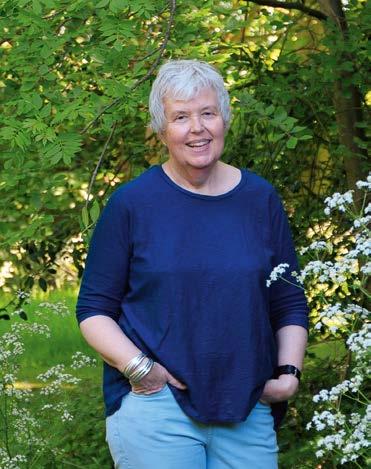
In Private Lives, Noel Coward wrote, damningly, “Very flat, Norfolk”. Warborough House proves him so wrong. Perched on top of a windy hill next to the North Norfolk coastline, the early Victorian building sits within a garden that slopes so steeply a quad bike is used to ameliorate the human effort involved in working its seven acres. The house has turned its back on the sea and faces south, presumably to shelter from the biting Siberian winds, although prevailing south-westerlies have meant that a solid shelter belt of trees and shrubs is still a prerequisite to successful gardening here, enclosing and protecting this once-exposed site. At sunrise on a May morning the garden has a mysterious, almost magical feel, with wildflowers and woodland blending inwards and upwards to the more formal terraces next to the house. These are luxuriant with dark, velvety irises and pompons of glowing alliums amid a froth of ghostly stocks. Dark, tree-lined spaces emerge into streaming sunlight, with the different areas of the garden flowing into each other via grassy pathways. It wasn’t always this way. When Arabella Morgan and her family moved here in 2001, the garden had been left largely to its own devices. “It was pretty unkempt,” Arabella recalls. With the help of gardener David Dyson and At sunrise on a May morning, his former wife Valerie, she set about clearing out impenetrable woodland at the garden has a mysterious, the base of the slope and disposing of a almost magical feel huge pile of rotting timber that was left over from trees that had been felled by
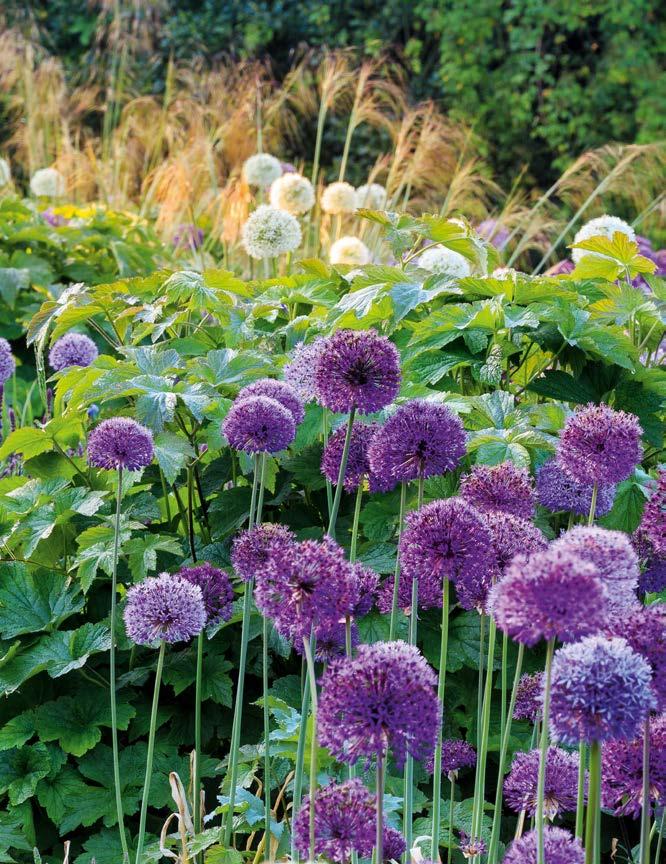
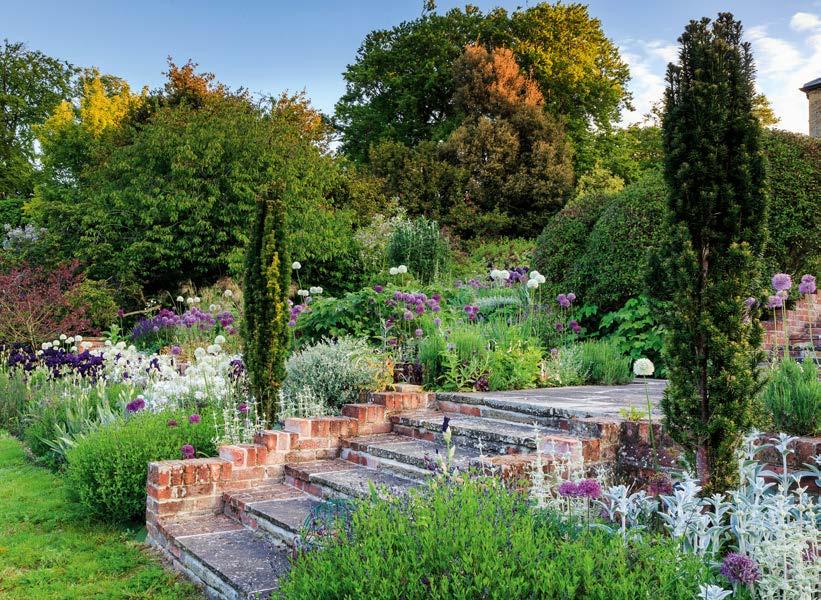
Clockwise from top
Hybrids of Allium ‘Purple Sensation’ catch the early morning sun; cloudpruned Lonicera nitida in the woodland; Irish yews stand sentinel by the steps; Arabella Morgan.
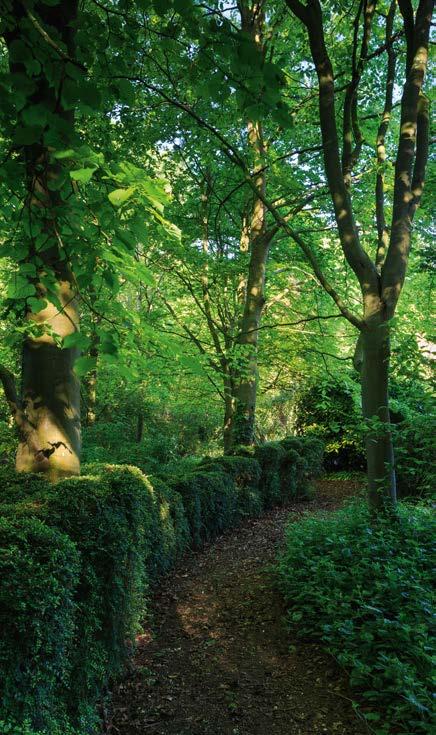
Alliums ‘White Giant’ and ‘Purple Sensation’ with Irish yew, Taxus baccata ‘Fastigiata’ and stocks, Matthiola incana ‘Alba’.
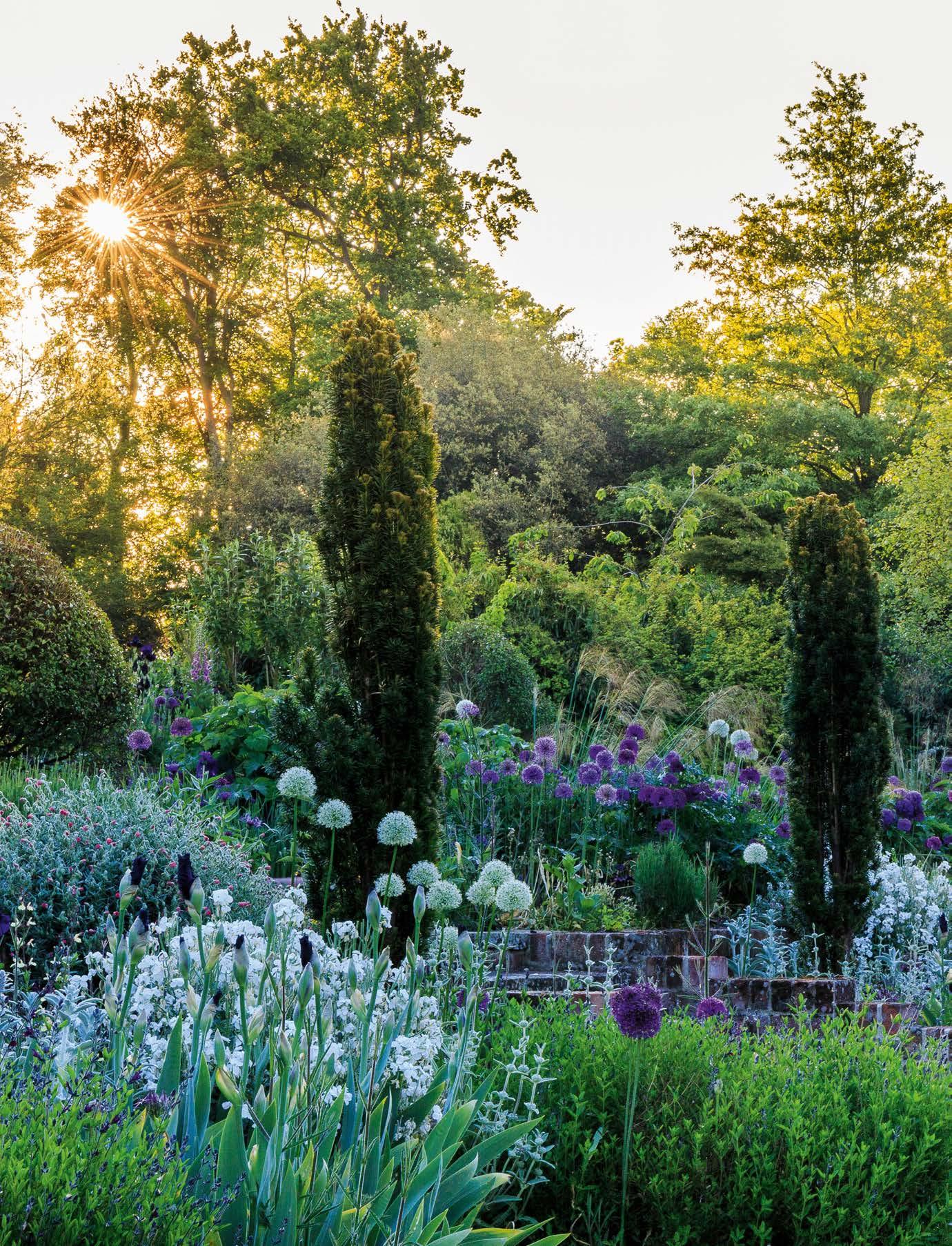
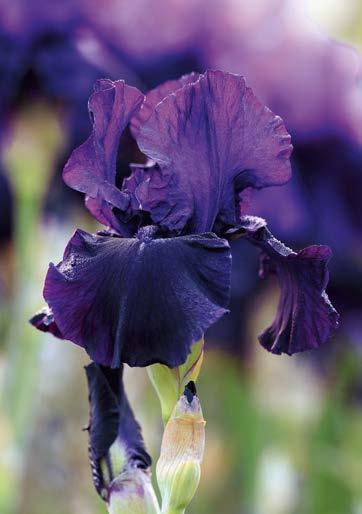
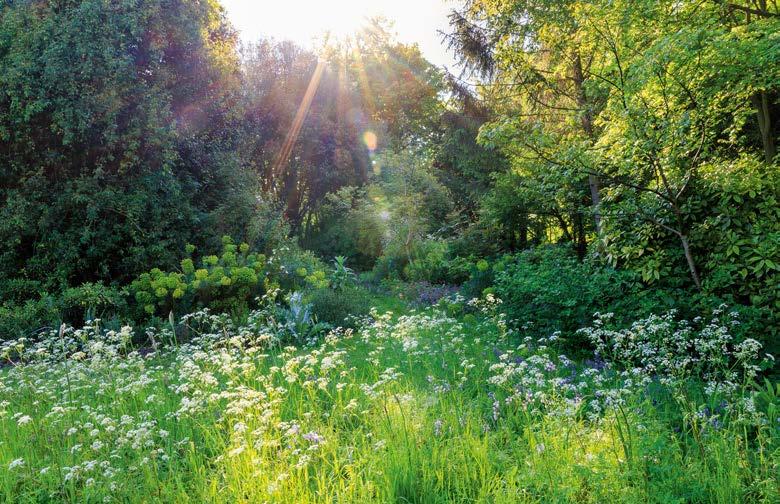
the devastating Great Storm of 1987. “We had this smouldering bonfire going for weeks and weeks – there was nothing else we could do with it,” she says.
For the next year or two, Arabella kept a watching brief on the garden, enjoying it as an open space where her two children could roam freely, while noticing how it behaved through the seasons. Then, aided by Valerie and David’s local knowledge, she started to develop different areas: terraces, wildflowers, a sunken garden, island borders and secluded woodland areas linked by curving pathways. It was a slow and painstaking process, not least because of the rabbits. “It was like Watership Down!” Arabella recalls. “In the end we had to rabbit-fence the entire garden in sections. We got them out of one section, planted it, got them out of the next section and so on.” The garden is now rabbit-free, but the muntjac deer are an ongoing problem. “They’re quite voracious eaters of green shoots, particularly in the spring, and they’re not easily deterred,” she says with a sigh.
As the new design took shape, the steep gradient informed not only the creation of the terraces, but also Arabella’s emphasis on spring planting. Top Beneath two “It’s often very dry birches, Betula utilis var. in summer because jacquemontii, are salvias, we’re on this south- abutilon and campion. Right Hybrids from facing chalk slope,” she Allium ‘Purple Sensation’. explains. “In the sun Far right The luxuriant everything just burns flower of a velvety off.” This includes purple bearded iris. Try ‘Midnight Majesty’. the grass, which tends Bottom Where garden to turn brown very meets meadow, a froth quickly. Because it of cow parsley in May. doesn’t get watered – “I think it’s a waste of water, and the slope means it would all run off anyway,” says Arabella – they leave it long, and have encouraged wildflowers in some areas by scraping off the topsoil and planting various seed mixes and bulbs, including cowslips (Primula veris), bluebells and clusters of Nectaroscordum siculum for height.
Because this is a coastal garden, frost is a rarity and there are some extremely sheltered pockets with a microclimate of their own, which enables tender species such as echiums, salvias (a passion of David’s – he has bred a number of new varieties) and abutilons to thrive, all of them overwintering here happily. “Some of what we grow outside here grows in the Temperate House at the Royal Botanic Gardens in Kew,” says Arabella. She should know, being a regular volunteer tour guide at Kew, where she is struck by the richness of the garden’s resources. “It’s a place that has such a lot to offer: marvellous collections, and the unparalleled knowledge of people who have been working there for 30-plus years,” she enthuses.
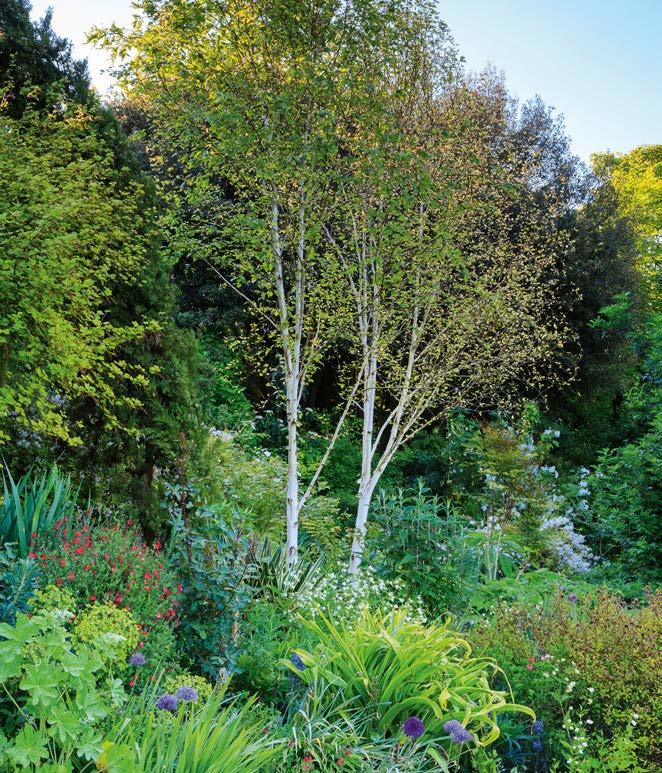
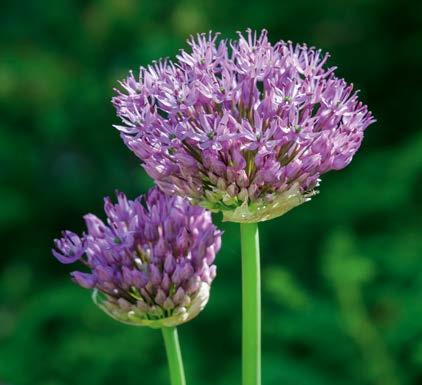
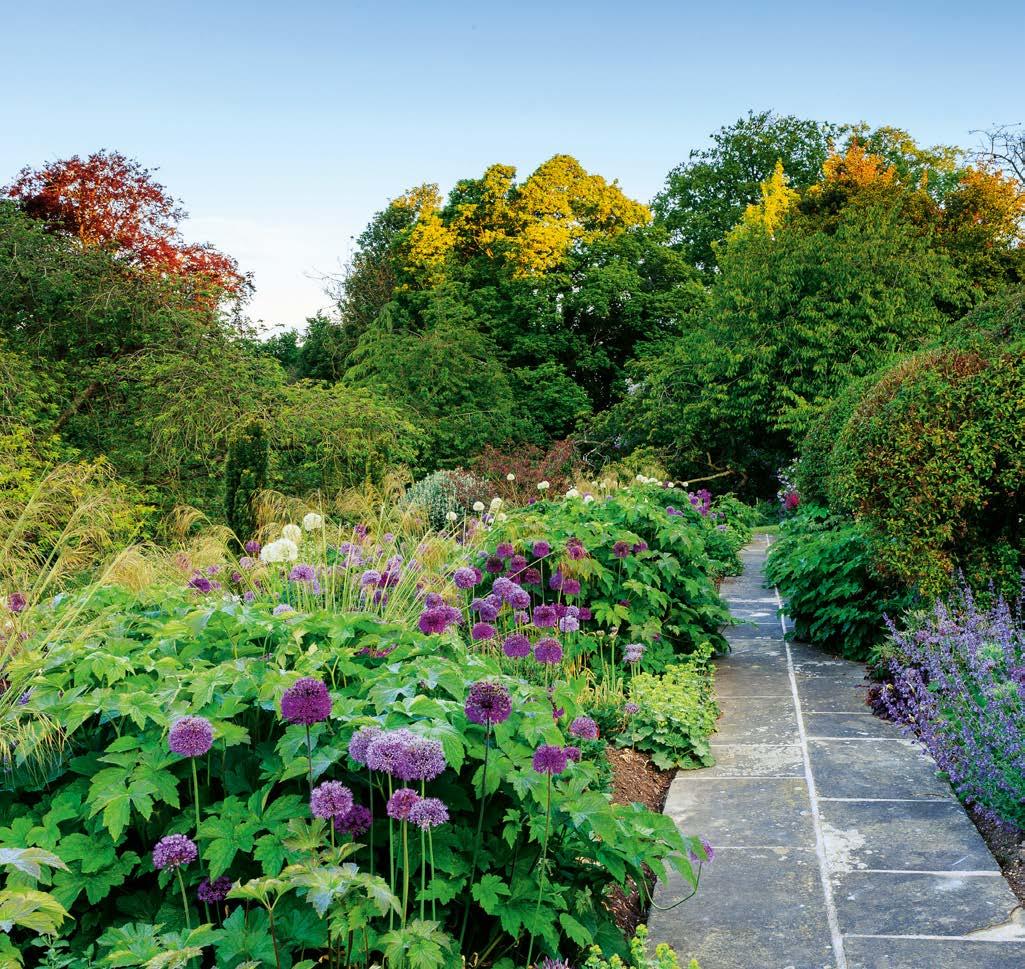
She is particularly passionate Above Views across the unexpected topiary features about trees, both at Kew and terrace take in alliums – think rows of birds and a elsewhere. “I marvel at trees,” and their paler coloured seedlings sparkling woodland elephant carved she says. “I look at them and among Stipa gigantea from shrubby honeysuckle, think, ‘If an engineer tried to and huge mounds of Lonicera nitida. They have make this structure and get it to Japanese anemones. stuck to a restricted planting support that weight, and move palette: “We go for what we that volume of water up every single day, and know will last the dryness of the summer.” do that chemical process of changing that into Arabella has also limited the use of colour, this…’” she pauses, “it’s amazing.” Having especially in spring. “I like muted tones,” she attended a primary school within Epping says. “They look good in a lot of lights, from Forest, school nature walks inspired Arabella early morning through to afternoon.” She from an early age to gather and press leaves, enjoys the contrasts of the garden: light and and amass PG Tips tree cards, painstakingly shade, tall and small, open and secluded. “It stuck into an album. No surprise then that all feels quite connected, going in and out of trees are integral to her garden, both as shelter the trees.” She also values its sense of place. belt and also to complement the open spaces. “It’s so calming,” she notes. “In the evening, Holm oak (Quercus ilex) abounds, being when it’s quiet, I just get the feeling that a lot resistant to the salt-laden winds, and beech of people have been here before me. There is a (Fagus sylvatica), Scots pine (Pinus sylvestris) reconnection with something quite ancient.” ■ and sycamore (Acer pseudoplatanus) also thrive on the well-draining chalk and sand. Warborough House, Sti key, Norfolk
Thanks to David’s help and experience, NR23 1QH. Usually opens for the National development of the garden continues, with Garden Scheme in May, but visit ngs.org.uk the creation of secluded seating areas and for the latest updates.
Spring colour THEMES
Advice from Arabella on choosing plants in a spring colour palette of purple and white
At Warborough House the focus is on a palette of purple and white, with an emphasis on spring fl owering. Bulbs include globe alliums such as ‘Purple Sensation’ (stocky, with large fl owerheads) and ‘Mount Everest’ (tall and white). These have self-seeded and hybridised, adding a range of paler purple and lavender hues.
Allium schubertii is lowergrowing with giant starburst fl owerheads of metallic pink fl orets. Nectaroscordum siculum, an understated member of the allium family, produces heads of pendulous bell-shaped fl owers hanging from long stalks. Bearded irises include ‘Midnight Majesty’ and ‘Black Swan’, both properly dark purple irises with sumptuous velvety fl owers. They contrast with the sweetly scented white cultivar of Brompton stocks (Matthiola incana ‘Alba’) used here. Abutilon vitifolium, a large, borderline-tender shrub needing full sun and a sheltered aspect, has open single fl owers in shades of white, mauve and purple. It is complemented by Stipa gigantea (golden oat grass), which is early-fl owering and grows to 2m with panicles of golden fl owers, and Euphorbia characias subsp. wulfenii, which has tall glaucous foliage with heads of limey bracts. The milky sap is an irritant, so wear gloves when cutting it back.
Far, Far AWAY
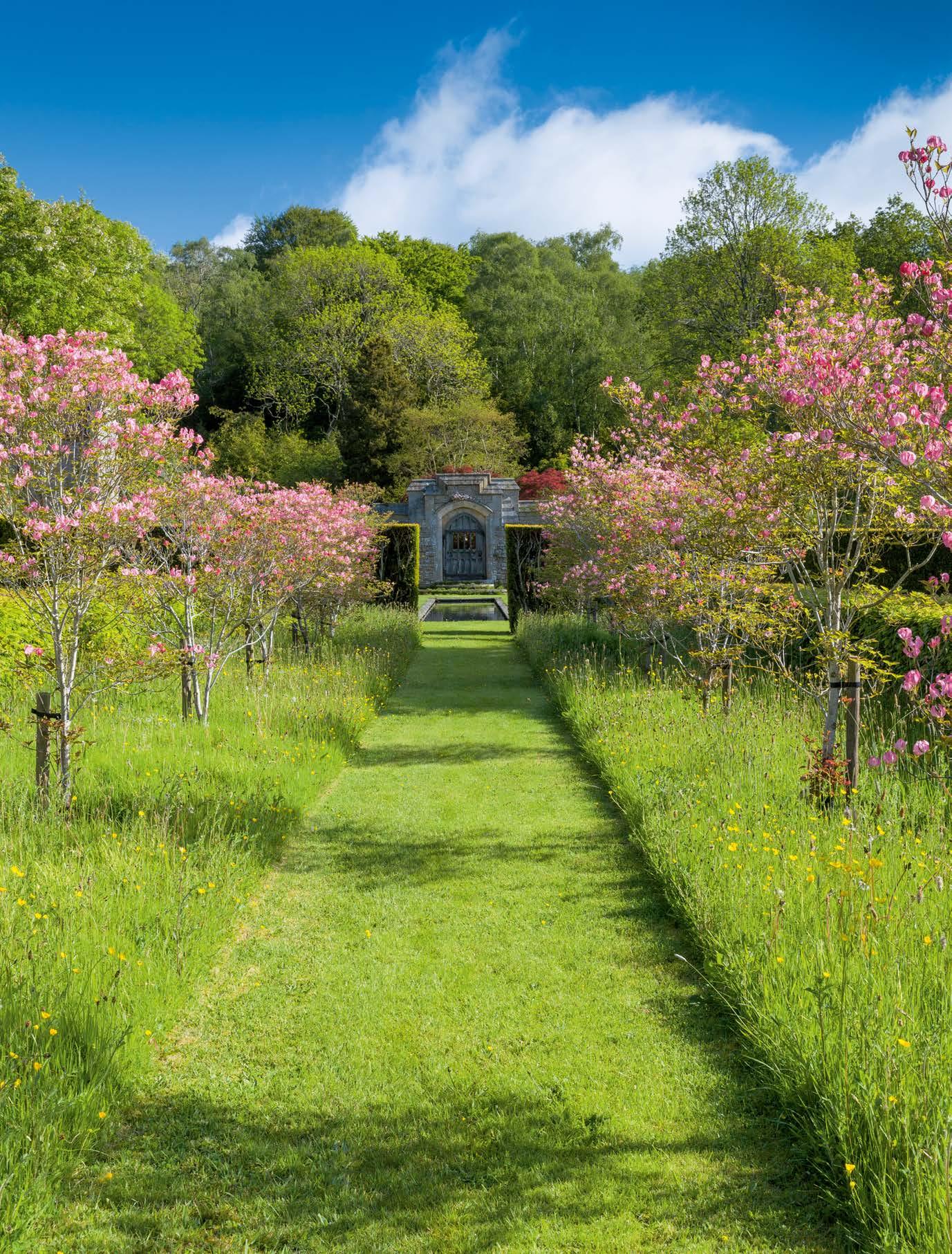
Perched high in the Shropshire hills above the remote hamlet of Church Preen sits Preen Manor and its otherworldly garden of two halves







